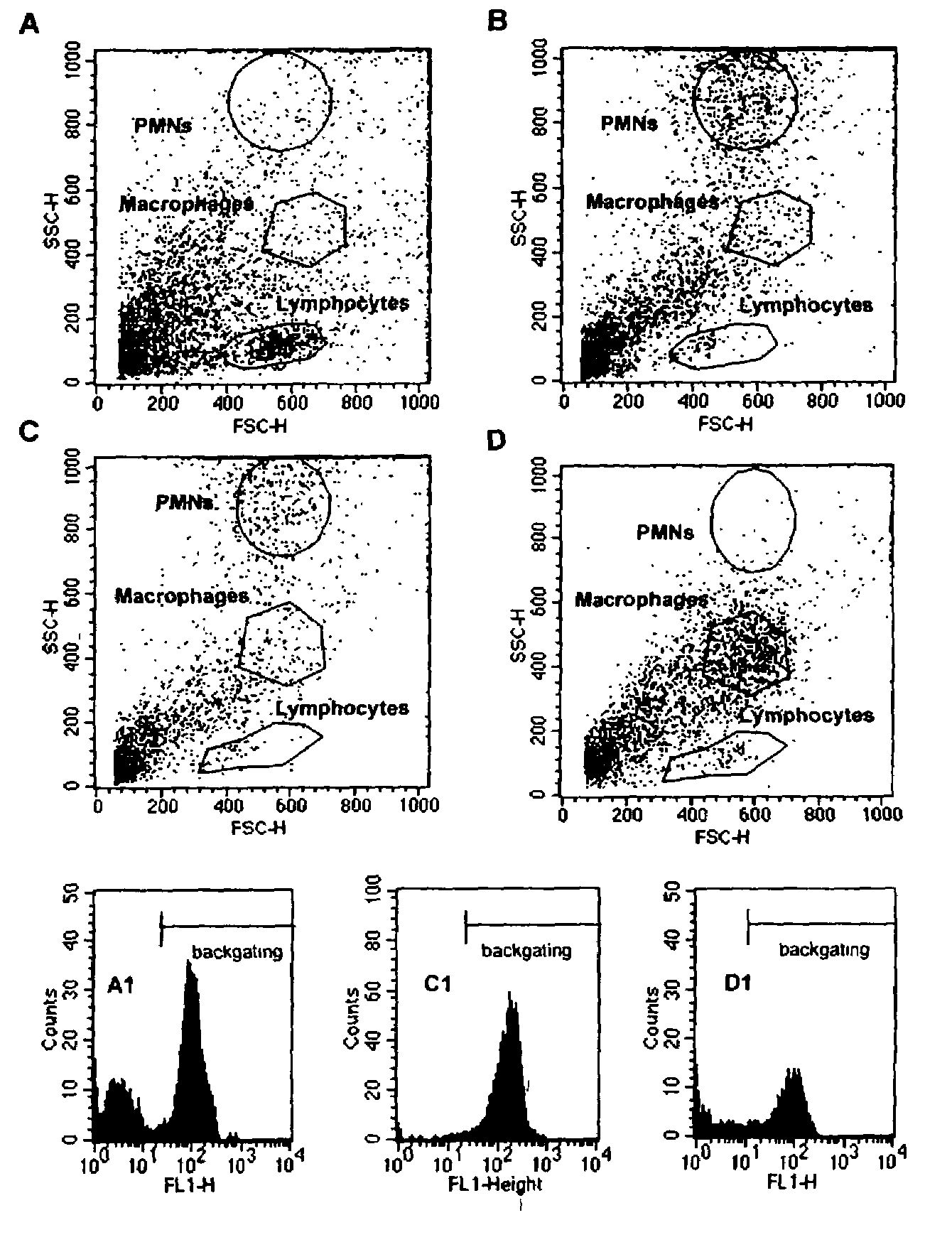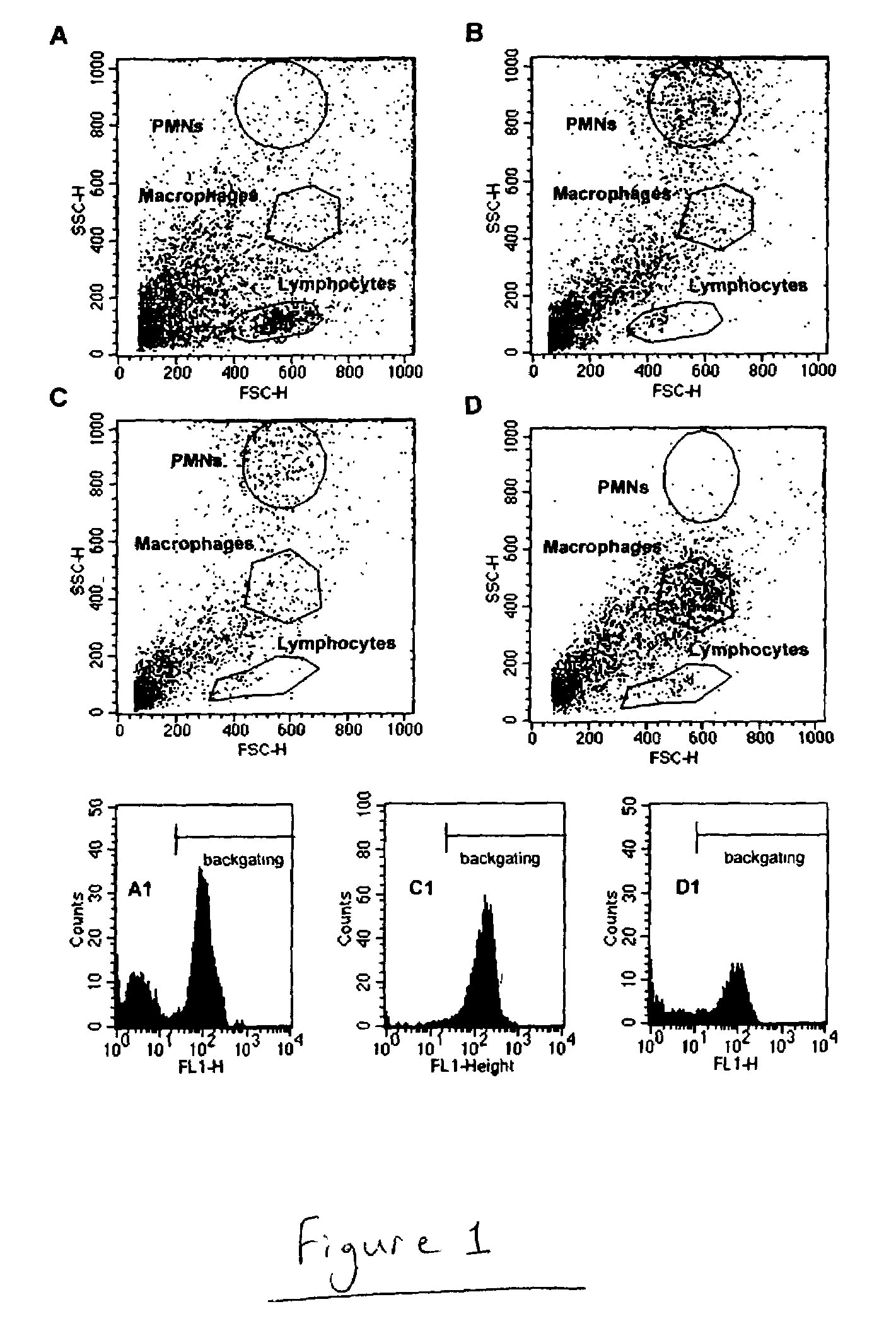Method for diagnosis of, and determination of susceptibility to bovine mastitis
a bovine mastitis and susceptibility technology, applied in the field of animal medicine/animal science, can solve the problems of reduced milk production, reduced milk quality, and reduced milk production
- Summary
- Abstract
- Description
- Claims
- Application Information
AI Technical Summary
Benefits of technology
Problems solved by technology
Method used
Image
Examples
example 1
Scatter Light-Based Differential Cell Count
Materials and Methods
[0036]Animals. Six first-lactation, non-periparturient heifers from Cornell University herds were used. Criteria for use included: 1) no previous history of mastitis; 2) at least three consecutive tests showing no bacterial growth of specific pathogens in milk cultures; and 3) no individual mammary gland quarter somatic cell count (SCC) greater than 200,000 / ml and an average of three consecutive measurements less than 100,000 SCC / ml. Animals were fed and milked according to federal and university regulations and housed in AAALAC-accredited facilities. The results of each cow's four tests are reported: the last test before bacterial challenge was conducted (pre-inoculation or pre-infection), and those obtained at one day post-inoculation (dpi), 4–8, and 9–14 dpi.
[0037]Experimental challenge, bacterial, and somatic cell counts (SCC). S. aureus ribotype 116-232-S3 was cultured in sterile Todd-Hewitt broth (Becton-Dickinson...
example 2
Lymphocyte ability to elicit efficient immune responses
[0068]The ability to prevent development of infection (expressed as bacteria found in milk) and inflammation (expressed as high SCC) was assessed in leukocytes obtained and isolated as described in Example 1. Monoclonal antibodies (all IgG1 isotype) against bovine CD3, and CD2 molecules (VMRD Inc., Pullman, Wash., USA; clones: MM1A, and BAQ95A, respectively) were used. Negative control antibody was a IgG1 mouse antibody (catalog 08-6599, Zymed, South San Francisco, Calif., USA). Approximately five million leukocytes were incubated in first wash buffer which contained 2% rabbit serum diluted in pH 7.2 PAE buffer (PBS with 0.1% NaN3, 10% citrate, 10 mM EDTA) and centrifuged for 10 minutes at 350 g. One million cells were then transferred to 12×75 mm polypropylene tubes (one for each primary antibody including isotype control) and resuspended in 50 μL of 10% rabbit serum in PAE. After 10 minutes on ice, 50 μL of isotype control or ...
example 3
Cell Activation / Cell Migration
[0076]This embodiment describes the expression of CD3 and CD11b antigens on leukocytes in milk after induced S. aureus mastitis. Mastitis was induced as described in Example 1. Milk collection, isolation of leukocytes was also carried out as described in Example 1. Cell types were identified on the basis of forward and side scatter. Backgating was conducted on CD3+ (T lymphocytes) or CD3− cells (non-T lymphocytes) as described. Each sample was assessed by use of a 2-step procedure that included preliminary identification of cell populations by scatter light in terms of cell size (forward scatter) and granularity (side scatter) followed by analysis of the fluorescence gating on each cell population's preliminary bitmap. This procedure was repeated and the bitmap adjusted until the final bitmap corresponded to the lowest possible background fluorescence (ie, fluorescence of cells stained with the negative control antibody) and the highest possible specifi...
PUM
 Login to View More
Login to View More Abstract
Description
Claims
Application Information
 Login to View More
Login to View More - R&D
- Intellectual Property
- Life Sciences
- Materials
- Tech Scout
- Unparalleled Data Quality
- Higher Quality Content
- 60% Fewer Hallucinations
Browse by: Latest US Patents, China's latest patents, Technical Efficacy Thesaurus, Application Domain, Technology Topic, Popular Technical Reports.
© 2025 PatSnap. All rights reserved.Legal|Privacy policy|Modern Slavery Act Transparency Statement|Sitemap|About US| Contact US: help@patsnap.com



